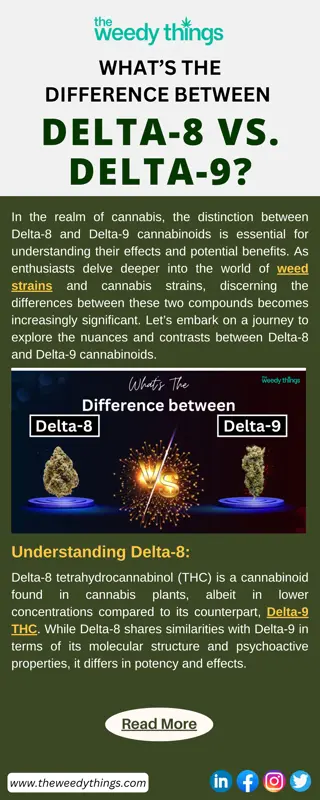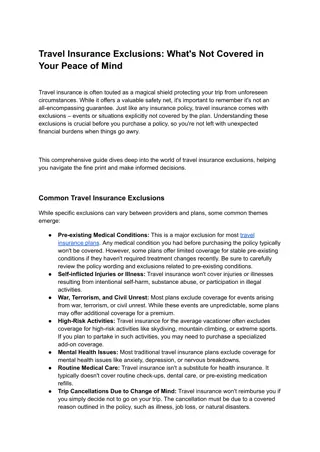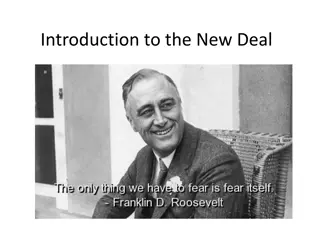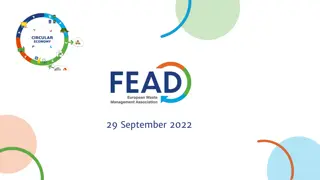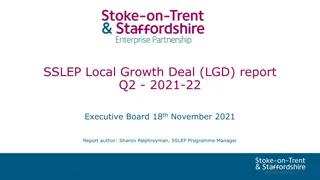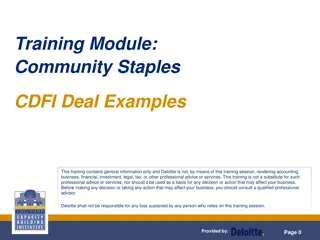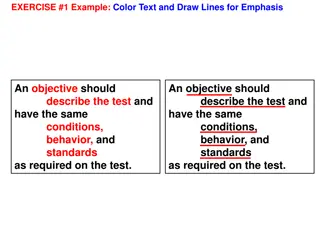
Unlocking the Potential of IoT in Education
Dive into the world of Internet of Things (IoT) with a project designed to enhance children's understanding of data and its practical applications. Explore sensors, data interpretation, and engaging activities to develop IoT knowledge among learners.
Download Presentation

Please find below an Image/Link to download the presentation.
The content on the website is provided AS IS for your information and personal use only. It may not be sold, licensed, or shared on other websites without obtaining consent from the author. If you encounter any issues during the download, it is possible that the publisher has removed the file from their server.
You are allowed to download the files provided on this website for personal or commercial use, subject to the condition that they are used lawfully. All files are the property of their respective owners.
The content on the website is provided AS IS for your information and personal use only. It may not be sold, licensed, or shared on other websites without obtaining consent from the author.
E N D
Presentation Transcript
IoT Whats the Deal? The Internet Internet of of Things Things (IoT) (IoT) project project aims aims to to support support children understanding understanding of, of, data data and and its its uses uses in in the the everyday everyday world provided provided schools schools with with sensors sensors that that gather gather different Dioxide Dioxide (CO (CO2 2), ), temperature, temperature, motion, motion, air air pressure pressure and and and uploaded uploaded to to the the university university server, server, where where learners The children to to engage world. . The different types types of of data and particulate particulate matter learners can can interpret interpret and engage with, The University University of of Edinburgh data; ; light, light, humidity, matter. . This This data and analyse analyse the with, and and develop develop their Edinburgh has humidity, Carbon data is is collated the data data. . their has Carbon collated Below Below are understanding understanding of of what with with AI, AI, how how they activities activities and and lessons Learner Learner interest interest and are activities activities in in suggested what IoT they can can capture lessons can can be and to to develop suggested four IoT is is. . Learners Learners then capture or or use be interspersed interspersed with develop pupil pupil- -led four lesson lesson blocks then consider consider how use their their own own data with further led projects projects. . blocks. . The how sensors sensors are data through through coding further research research and The initial initial focus are being being used coding and and Micro and exploration exploration dependant focus is is gaining used in in industry, Micro: :Bits dependant on gaining an industry, Bits. . These These an on
Lesson 1: What is IoT? What is IoT? This introductory session is about setting the scene for IoT. We will learn about sensors that gather live data in our everyday lives and how this is linked to a more global IoT network.
Learning Intention: We are learning about the importance of data collection and analysis. Success Criteria: Success Criteria: o I can explain a definition of the Internet of Things. o I can analyse use of Connected Devices o I can discuss and share my IoT research with others 3
Key Questions: Ample time should be allotted to complete research on the concept of IoT. Ample time should be allotted to complete research on the concept of IoT. oWhat does Internet of Things mean? oHow do you know if a device is connected to the Internet? oDo you have any IoT devices at home? oHow can you control IoT devices? oAre you surprised by certain devices being part of the IoT network? oWere you already aware that certain devices were part of IoT? 4 Learners can develop their own questions on this topic to be included here.
Editable Slide: o Depending on writing and literacy focus learners could write notes on their research, create a Sway, Video, news report, collaborate on an online platform such as Teams, Google Classroom, Padlet, Mural, etc. o At the end of the lesson learners should share their learning and give other s the opportunity to make notes and/or further their own understanding through peer discussion. Pupil Participation: o How would your learners like to display their own learning? o Would Group or individual work suit your learners best? o Did any pupil developed questions particularly inspire rich discussion, productive struggle and open-ended thinking? ADD A FOOTER MM.DD.20XX 5
Plenary Learners should Learners should summarise session and then consider the following statement: session and then consider the following statement: IoT is omnipresent in today s world summarise their learning from this their learning from this 6
Plenary Prompts: IoT is omnipresent in today s world because: oWe have all used IoT today by . oTowns/cities are filled with IoT. E.g. oIoT has helped me today through IoT is not omnipresent in today s world because: oI haven t used IoT devices today by not oThere are certain areas of the World without internet connection such as 7
What is Internet of Things? Click below or copy hyperlink for an explanation of IoT Click below or copy hyperlink for an explanation of IoT from the BBC: from the BBC: Click Here https://www.bbc.co.uk/ news/av/technology- 36912701 ADD A FOOTER MM.DD.20XX 8
Lesson 2: IoT and My School IoT and My School Lesson Two develops understanding around using data to monitor school environments. Pupils will learn about sensors that gather live data in their own classroom. Pupils then compare this information to live data gathered from other schools in Scotland.
Learning Intention: We are learning about the importance of data collection and analysis. Success Criteria: Success Criteria: o I can say how data can be used to develop learning environments. o I can analyse data from my school. o I can compare data from different settings. 10
Research and Explore: Ample time should be allotted to complete Ample time should be allotted to complete research on datasets from your school, area and research on datasets from your school, area and further afield. further afield. oLearners should be provided with free time to explore the live data for the their own classroom and schools in their wider area/nationally. oLearners should be encouraged to find interesting data points and make inferences and be ready to share them with the class. Learners can develop their own questions on this topic to be included here. 11
Discussion Prompts: Possible similarities Possible similarities oThey show the same date and time period. oThey all have time at zero. oThey all follow the same bell curve . oThey all have an X-axis and a Y-axis Possible differences Possible differences oThe Scale is different. oThe Range is different. oClassrooms with relative highest/lowest Lux, CO2, Motion, Temperature, Humidity. oThe Sensors are in different locations nationally and within school buildings. 12 Encourage annotations on the data sets, discussions and explanations why there are no right or wrong answers when it comes to data analysis.
Research and Explore: Ample time should be allotted to complete research on Ample time should be allotted to complete research on which dataset/data point is a learner s favourite. which dataset/data point is a learner s favourite. oLearners are now tasked with deciding where they would like to place or hide sensors around their school and putting forward to best argument as to why the sensor must be placed here. oThis thinking could lead to learners/adults hiding the sensors in their own school building, asking learners to guess where it is hidden and explain how they used the data to decide where it is hidden. 13
Plenary Learners should Learners should summarise session and then consider the following statement: session and then consider the following statement: This data is my favourite because summarise their learning from this their learning from this 14
Plenary Prompts: This data is my favourite because: oIt shows that our Teacher entered and left our classroom at this time... oIt shows the times of sunrise and sunset were oI can see the highest/lowest temperature today was at I would like to learn more about this data because: oI don t know why I see X at this time/in this place. oI wonder if I can improve the humidity/Lux levels/CO2 Levels. 15
Plenary Prompts: I think the sensor should be placed here because: oIt will show if the levels of CO2 are safe during indoor PE. oIt will show motion for the highest number of learners in the school day. oIt will help use to improve our learning environment/timetable during the school day. Learners should be invited to include their own prompts below: 16
Lesson 3: IoT and Industry IoT and Industry The use of IoT and Data in industry to develop efficiency, improve conditions or even reduce emissions. Learning about sensors gathering live data in industry/commercial settings. Comparisons between data from various sources to further explore Industry Internet of Things (IIoT) and Commercial applications.
Learning Intention: We are learning about the importance of data collection and analysis. Success Criteria: Success Criteria: o I can say how data can be used to develop industry and commerce. o I can show how data analysis can be applied. o I can show how to use data to improve industry/commercial environments. 18
Research and Explore: Ample time should be allotted to complete research on Ample time should be allotted to complete research on preferred examples of Industry/Commercial IoT preferred examples of Industry/Commercial IoT o Dynamic Positioning on large sea/ocean-going vessels to ensure a ship stays in the exact position it should be using automation and AI. o IoT agriculture sensors that can be attached animals on a farm to monitor their health and wellbeing, and physical location. o Biscuit factories ensuring that each biscuit is perfect through IoT technology. o Football players wearing IoT devices to improve performance and monitor health. o IoT sensors inside rugby balls. 19 Learners can develop their own IIoT examples to be included here.
Research and Explore: Ample time should be allotted to complete research on Ample time should be allotted to complete research on preferred examples of Industry/Commercial IoT preferred examples of Industry/Commercial IoT Inside the Factory offers insight into making certain foodstuffs this needs to be accessed via BBC iPlayer and is not suitable for all learners. Click here or use the following link to find out more: https://www.bbc.co.uk/programmes/b07mddqk/episodes/player Learners can develop their own IIoT examples to be included here. 20
Research and Explore: Ample time should be allotted to complete research on Ample time should be allotted to complete research on IIoT IIoT o Develop/design your own industrial machine, inspired by research, which uses IoT to support core functions. o Create an exhibition in the classroom or in the wider school setting to exhibit these machines and illustrate their functions. 21
Plenary Learners should Learners should summarise session and then consider the following statement: session and then consider the following statement: IoT is necessary in all industries because summarise their learning from this their learning from this 22
Plenary Prompts: IoT is necessary in all industries because: o It supports efficiency by... o It develops uniformity o It helps the environment through reducing unnecessary emissions o AI is the future of industry. IoT is not necessary in all industries because: o It takes jobs from humans. o AI cannot feel like humans can. o The ease in accessing data worldwide can be a security issue. 23
Lesson 4: Micro:Bits and IoT Micro:Bits and IoT Data Collection through coding sensors. Learners can subsequently compare the data they have collected to live data gathered from their own classrooms, to explore how they can maintain a better learning environment.
Learning Intention: We are learning about the importance of data collection and analysis. Success Criteria: Success Criteria: o I can say how data can be used to develop industry/working environments. o I can analyse data from my school. o I can compare data from different settings. 25
Research and Explore: Using and Coding Micro:Bits Using and Coding Micro:Bits There are two beginner coding step counters for Micro:Bits which you can find by clicking here or clicking here. Alternatively you can paste the following URL into your web browser: o https://microbit.org/projects/make-it-code-it/step- counter/ o https://microbit.org/projects/make-it-code-it/low- energy-step-counter/ 26
Key Questions: As you familiarise yourselves with the step As you familiarise yourselves with the step- -counters. counters. How many steps are there between the gym hall and our classroom? Can you use the fewest steps to get around our classroom and the most? Does everyone take the same number of steps when they cover certain distances? 27 Can you think of your own questions at this time?
Research and Explore: Use your Step Use your Step- -Counters alongside your sensors. Counters alongside your sensors. Use these Micro:Bit step counters in the same locations as the sensors. Collect a range of different step counter data sets and display these graphically either in bar graphs or using other methods. Compare graphs to peers graphs. 28
Research and Explore: Use your Step Use your Step- -Counters alongside your sensors. Counters alongside your sensors. Compare the data collected from the Micro:Bits to the IoT sensor data from the same location. Begin an investigation into: oDoes my pedometer number increase in direct proportion to the Motion Detection? oCan this be linked to CO2and if so, how? Learners are welcome to develop their own avenues for research on this topic but should be mindful of the question: How can I make this a fair test? 29
Plenary Learners should Learners should summarise learning from this session and learning from this session and then consider the following then consider the following questions: questions: summarise their their o How can I make this a fair test? o Does my pedometer number increase in direct proportion to the Motion Detection? o Can this be linked to CO2 and if so, how? 30
Numeracy & Maths MNU 2-10b I can carry out practical tasks and investigations involving timed events and can explain which unit of time would be most appropriate to use. MNU 2-20a Having discussed the variety of ways and range of media used to present data, I can interpret and draw conclusions from the information displayed, recognising that the presentation may be misleading. MTH 2-21a I can display data in a clear way using a suitable scale, by choosing appropriately from an extended range of tables, charts, diagrams and graphs, making effective use of technology. Curricular Links Numeracy & Numeracy & Maths Literacy Literacy Technology Technology Social Studies Social Studies Maths 31
Literacy ENG 2-27a I am learning to use language and style in a way which engages and/or influences my reader. LIT 2-02a When I engage with others, I can respond in ways appropriate to my role, show that I value others contributions and use these to build on thinking. LIT 2-14a Using what I know about the features of different types of texts, I can find, select and sort information from a variety of sources and use this for different purposes. LIT 2-25a I can use my notes and other types of writing to help me understand information and ideas, explore problems, make decisions, generate and develop and develop ideas or create new text. I recognise the need to acknowledge my sources and can do this appropriately. LIT 2-26a By considering the type of text I am creating, I can select ideas and relevant information, organise these in an appropriate way for my purpose and use suitable vocabulary for my audience. LIT 2-29a I can persuade, argue, explore issues or express an opinion using relevant supporting detail and/or evidence. Curricular Links Numeracy & Numeracy & Maths Literacy Literacy Technology Technology Social Studies Social Studies Maths 32
Technology TCH 2-03b Throughout all my learning, I can use search facilities of electronic sources to access and retrieve information, recognising the importance this has in my place of learning, at home and in the workplace. TCH 2-12a I can extend my knowledge and understanding of engineering disciplines to create solution. TCH 2-15a I can create, develop and evaluate computing solutions in response to a design challenge. Curricular Links Numeracy & Numeracy & Maths Literacy Literacy Technology Technology Social Studies Social Studies Maths 33
Social Studies Curricular Links SOC 3-08a I can identify the possible consequences of an environmental issue and make informed suggestions about ways to manage the impact if researching around farming/industrial applications of IoT. Numeracy & Numeracy & Maths Literacy Literacy Technology Technology Social Studies Social Studies Maths 34


